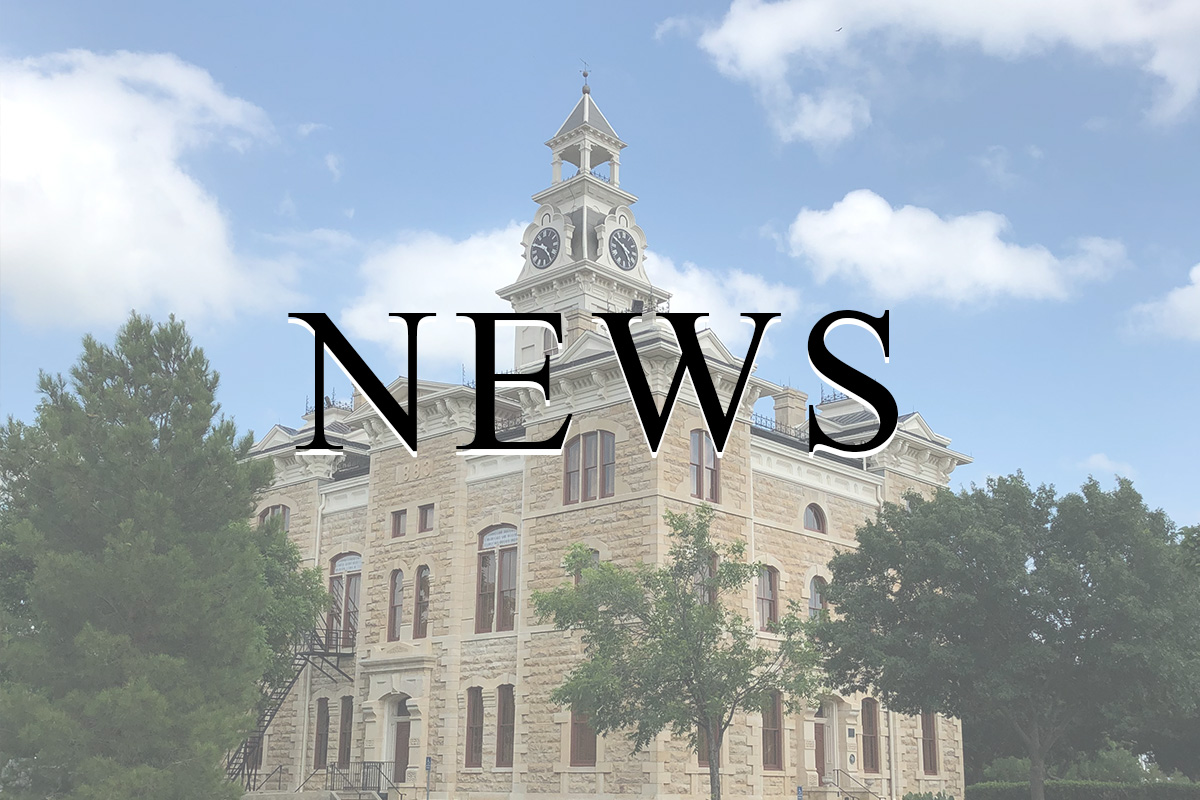Fires spark in drier conditions

By Kathy Thomson
Shackelford County has had its share of wildfires in the last week, with local volunteers called out to fight several good-sized pasture fires, including two in the same night.
Last week, the Texas A&M Forest Service (TFS) cautioned all Texans to use caution outdoors because of the “exceptional” drought conditions.
Shackelford County, along with most of the Big Country, remains under a burn bun.
“We’ve been quite busy the past week,” said Albany Volunteer Fire Department chief Kyle Tischler. “We responded to two possible structure fires in Albany last week and we were called out for a fire on the Caldwell while we were still at the Dawson Conway fire.”
The TFS labeled the wildfire that was on the Dawson Conway part of Bluff Creek Ranch “DC3,” and said that the fire burned 645 acres before it was contained on Friday, Aug. 30.
Shackelford County Rural Volunteer Fire Department (SCRVFD) and Lueders Fire Department were already fighting the DC3 fire when the AFVD was called out.
“I was told that the fire was started by electrical lines arcing while an electric company out of Snyder was running lines in the area,” said Tischler. “Our department was called out around 4:30 p.m. on Thursday, Aug. 29. We took our brush trucks and a tanker.”
Along with the equipment brought by the three local fire departments, two privately owned dozers assisted in battling the blaze, according to the fire chief.
The TFS joined in fighting the DC3 fire about an hour after the AVFD was called.
“The Forest Service brought three dozers, two type-six engines, and two airplanes,” said Tischler. “The planes made three drops each. The airplanes are the calvary; they can sure save the day when they are available!”
Tischler said that moisture coupled with the airplane drops brought the fire under control, but lightning from the storms on Thursday night probably started another grass fire, this one in the eastern part of the county.
“The initial sighting was on Caldwell Lane, and they thought the fire was at the end of the lane at the river,” Tischler said. “Local ranchers went out looking for it, and the fire ended up being just a little further away, on a part of the Sloan that borders the Caldwell. We assume it was started by lightning because there aren’t any electric lines in the area.”
Members of the AVFD left the DC3 fire and went out to the Caldwell with their brush trucks as soon as they could safely do so, as did volunteers from the SCRVFD.
“We had four trucks out on the Dawson Conway fire, and three of those went directly from there to the Sloan at around 3:00 a.m. on Friday morning,” said SCRVFD chief Brad Henry. “We had around 10 personnel fighting the fires.”
The Caldwell Lane fire burned about 400 acres before it was contained, according to Henry.
“Most of our guys got back to town around 5:00 a.m. on Friday morning,” said Tischler.
This Sunday, Sept. 1, members of the SCRVFD were out again. They were asked to have a truck on standby when a cutting torch was needed to free a cow from a cattle guard.
“We never sprayed any water, and they were able to get the cow out,” said Henry. “I don’t know what shape the cow was in, but I do know we’ve been busy.”
Donations & Volunteers
All of the local fire departments rely on donations and volunteers to be able to protect their community.
“Without your donations and support, grass fires can not be stopped before they destroy land, structures, and personal property,” said Tischler. “It’s your monetary gifts that we use to repair and maintain our fire apparatus and equipment. Without your help, we can not continue our campaign to protect lives and property.”
Tischler gave specific examples of the costs to keep the equipment functioning, and added that contributions, not city funds, are used to replace tires on the brush trucks since they are used for county fires.
“A single truck tire costs $500, and there are 10 tires per truck,” said Tischler. “That’s $5,000 just for tires! And most trucks carry 600 to 1,000 feet of two and a half inch fire hose that costs $119 per 50 foot section, for another $2,400.”
The trucks also carry 600 feet of one and three-quarter inch hose and 1,000 feet of five inch supply hose, he added.
“Firefighting nozzles cost $800 or more, and even just a firefighting nozzle rebuild kit is $650,” said Tischler. “We have many firefighting nozzles on each truck.”
A self-contained breathing apparatus unit is $7,200, and spare cylinders are $800 each.
“Please consider making a tax deductible donation to your local volunteer fire department,” Tischler said. “It just may save a life.”
The city and rural departments are both in need of donations and volunteers.
“Right now we are trying to recoup and put all our equipment back into working order,” said Henry. “For some reason, every time we fight a fire it seems like something breaks, but we keep trying to put the fires out. We don’t want to see the county burn up again.”
— —

